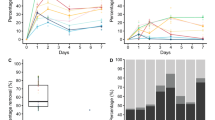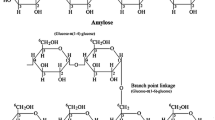Abstract
The research aims to evaluate the effectiveness of surface water treatment by using Moringa oleifera seeds by-products as bio-coagulant to remove turbidity and natural organic matter. This approach brings more benefits as compared to others, particularly, no chemical use, low cost, easy to implement but equivalent efficiency and also safe for the health. The surface water samples were collected from three sites in the Dong Nai River, Vietnam, with the average concentrations of pH, turbidity, chemical oxygen demand (COD) and total Kjeldahl nitrogen (TKN) ranging from 6.2 ± 0.3 to 6.7 ± 0.2, 25.2 ± 2.5 to 41.7 ± 7.9 NTU, 22.4 ± 6.4 to 41.1 ± 5.9 mg L−1 and 0.70 ± 0.20 to 1.08 ± 0.15 mg L−1, respectively. The study has found that the optimum bio-coagulant dosage was 0.15 ml L−1 for the water samples in both rainy and dry seasons. In the rainy season, the turbidity removal efficiencies in Tan Luong Ferry, Nguyen Van Tri Park and Hoi Son Ferry ranged from 87.8 ± 2.9 to 93.3 ± 1.0%, while the tendency for dry season was obtained from 85.7 ± 2.5 to 94.3 ± 1.1%, respectively. The treated turbidity concentration met the Vietnam’s National Technical Regulation on domestic water quality. Furthermore, the paired t tests used to compare the pre-treatment and post-treatment dataset for COD and turbidity removal efficiencies were significant (p < 0.05) in three studied sites. Results indicated that Moringa oleifera extract is a promising material which is environmental-friendly and low cost to treat the surface water.





Similar content being viewed by others
References
Abebe LS, Chen X, Sobsey MD (2016) Chitosan coagulation to improve microbial and turbidity removal by ceramic water filtration for household drinking water treatment. Int J Environ Res Public Health 13(3):269
Al-Anizi AA, Hellyer MT, Zhang D (2014) Toxicity assessment and modelling of Moringa oleifera seeds in water purification by whole cell bioreporter. Water Res 56:77–87
Ali RM, Hamad HA, Hussein MM, Malash GF (2016) Potential of using green adsorbent of heavy metal removal from aqueous solutions: adsorption kinetics, isotherm, thermodynamic, mechanism and economic analysis. Ecol Eng 91:317–332
APHA, Awwa & WEF (2012) Standard methods for the examination of water and wastewater, 22nd edn. American Public Health Association, Washington, DC
Bichi MH (2013) A review of the applications of Moringa oleifera seeds extract in water treatment. Civ Environ Res 3(8):1–10
Bratby J (2016) Coagulation and flocculation in water and wastewater treatment. IWA Publishing, London
Camacho FP, Sousa VS, Bergamasco R, Ribau TM (2017) The use of Moringa oleifera as a natural coagulant in surface water treatment. Chem Eng J 313:226–237
Choy M, Dubé CM, Patterson K, Barnes SR, Maras P, Blood AB, Hasso AN, Obenaus A, Baram TZ (2014) A novel, noninvasive, predictive epilepsy biomarker with clinical potential. J Neurosci 34:8672–8684
Delelegn DA, Sahile S, Husen A (2018) Water purification and antibacterial efficacy of Moringa oleifera Lam. Agric Food Secur 7(1):25
Gaikwad VT, Munavalli GR (2019) Turbidity removal by conventional and ballasted coagulation with natural coagulants. Appl Water Sci 9:130
Gao BY, Cho YB, Yao QY, Wang BJ (2005) Characterization and coagulation of a poly aluminium chloride coagulant with high AL13 contant. J Environ Manag 76:143–147
Garcia-Fayos B, Arnal JM, Sancho M, Rodrigo I (2016) Moringa oleifera for drinking water treatment: influence of the solvent and method used in oil-extraction on the coagulant efficiency of the seed extract. Desalin Water Treat 57(48–49):23397–23404
Garde WK, Buchberger SG, Wendell D, Kupferle MJ (2017) Application of Moringa oleifera seed extract to treat coffee fermentation wastewater. J Hazard Mater 329:102–109
Gassenschmidt U, Jany KD, Tauscher B, Niebergall H (1995) Isolation and characterization of a flocculating protein from Moringa oleifera Lam. Biochim Biophys Acta (BBA)-Gen Subj 1243(3):477–481
Gauthier E, Fortier I, Courchesne F, Pepin P, Mortimer J, Gauvreau D (2000) Aluminum forms in drinking water and risk of Alzheimer’s disease. Environ Res 84(3):234–246
Hamid SHA, Lananan F, Din WNS, Lam SS, Khatoon H, Endut A, Jusoh A (2014) Harvesting microalgae, Chlorella sp. by bio-flocculation of Moringa oleifera seed derivatives from aquaculture wastewater phytoremediation. Int Biodeterior Biodegrad 95:270–275
Hoa NT, Hue CT (2018) Enhanced water treatment by Moringa oleifera seeds extract as the bio-coagulant: role of the extraction method. J Water Supply Res Technol AQUA 67(7):634–747
Inan-Eroglu E, Ayaz A (2018) Is aluminum exposure a risk factor for neurological disorders? J Res Med Sci 23:51
Iqbal A, Hussain G, Haydar S, Zahara N (2019) Use of new local plant-based coagulants for turbid water treatment. Int J Environ Sci Technol 16(10):6167–6174
Kansal SK, Kumari A (2014) Potential of M. oleifera for the treatment of water and wastewater. Chem. Rev 114(9):4993–5010
Katayon S, Noor MJ, Asma M, Ghani LA, Thamer AM, Azni I, Ahmad J, Khor BC, Suleyman AM (2006) Effects of storage conditions of Moringa oleifera seeds on its performance in coagulation. Bioresour Technol 97(13):1455–1460
Kwaambwa HM, Maikokera R (2007) A fluorescence spectroscopic study of a coagulating protein extracted from Moringa oleifera seeds. Colloid Surface B 60(2):213–220
Madrona GS, Serpelloni GB, Vieira AMS, Nishi L, Cardoso KC, Bergamasco R (2010) Study of the effect of saline solution on the extraction of the Moringa oleifera seeds active component for water treatment. Water Air Soil Pollut 211:409–415
Matilainen A, Lindqvist N, Tuhkanen T (2005) Comparison of the effiency of aluminium and ferric sulphate in the removal of natural organic matter during drinking water treatment process. Environ Technol 26(8):867–876
Meneghel AP, Gonçalves ACJ, Fernanda R, Dragunski DC, Lindino CA, Strey L (2013) Biosorption of cadmium from water using Moringa (Moringa oleifera Lam) seeds. Water Air Soil Pollut 224:1383
Ministry of Health of Vietnam (2009) QCVN 02:2009/BYT-National technical regulation on domestic water quality. Hanoi
Mohammad HM, Bijan B (2018) Application of Moringa oleifera coagulant protein as natural coagulant aid with alum for removal of heavy metals from raw water. Desalin Water Treat 116:187–194
Muyibi SA, Evison LM (1995) Optimizing hysical parameters affecting coagulation of turbid water with Moringa oleifera seeds. Water Res 29:2689–2695
Muyibi SA, Noor MMJM, Leong TK, Loon LH (2002) Effects of oil extraction from Moringa oleifera seeds on coagulation of turbid water. Int J Environ Stud 59(2):243–254
Naceradska J, Pivokonska L, Pivokonsky M (2019) On the importance of pH value in coagulation. J Water Supply Res Technol AQUA 68(3):222–230
Ndabigengesere A, Narasiah KS (1998) Quality of water treated by coagulation using Moringa oleifera seeds. Water Res 32:781–791
Ndabigengesere A, Narasiah KS, Talbot BG (1995) Active agents and mechanism of coagulation of turbid waters using Moringa oleifera. Water Res 29:703–710
Nonfodji OM, Fatombi JK, Ahoyo TA, Osseni SA, Aminou T (2020) Performance of Moringa oleifera seeds protein and Moringa oleifera seeds protein-polyaluminum chloride composite coagulant in removing organic matter and antibiotic resistant bacteria from hospital wastewater. J Water Process Eng 33:101103
Okuda T, Baes AU, Nishijima W, Okada M (2001) Isolation and characterization of coagulant extracted from Moringa oleifera seed by salt solution. Water Res 35(2):405–410
Olyaie E, Banejad H, Chau KW, Melesse AM (2014) A comparison of various artificial intelligence approaches performance for estimating suspended sediment load of river systems: a case study in United States. Environ Monit Assess 187:187–189
Pi X, Jin L, Li Z, Liu J, Zhang Y, Wang L, Ren A (2019) Association between concentrations of barium and aluminum in placental tissues and risk for orofacial clefts. Sci Total Environ 652:406–412
Pritchard M, Craven T, Mkandawire T, Edmondson AS, O’Neill JG (2010) A comparison between Moringa oleifera and chemical coagulants in the purification of drinking water—an alternative sustainable solution for developing countries. Phys Chem Earth Parts A/B/C 35(13–14):798–805
Rebah FB, Mnif W, Siddeeg SM (2018) Microbial flocculants as an alternative to synthetic polymers for wastewater treatment: a review. Symmetry 10:556
Soros A, Amburgey JE, Stauber CE, Sobsey MD, Casanova LM (2019) Turbidity reduction in drinking water by coagulation-flocculation with chitosan polymers. J Water Health 17(2):204–218
Stohs SJ, Hartman MJ (2015) Review of the safety and efficacy of Moringa oleifera. Phytother Res 29(6):796–804
Teh CY, Budiman PM, Shak KPY, Wu TY (2016) Recent advancement of coagulation flocculation and its application in wastewater treatment. Ind Eng Chem Res 55:4363–4389
Tunggolou J, Payus C (2017) Application of Moringa oleifera plant as water purifier for drinking water purposes. J Environ Sci Technol 10:268–275
Vieira AMS, Vieira MF, Silva GF, Araújo AA, Fagundes-Klen MR, Veit MT, Bergamasco R (2010) Use of Moringa oleifera seed as a natural adsorbent for wastewater treatment. Water Air Soil Pollut 206(1–4):273–281
Wang WC, Xu DM, Chau KW, Lei GJ (2014) Assessment of river water quality based on theory of fuzzy sets and fuzzy binary comparison method. Water Resour Manag 28:4183–4200
Yarahmadi M, Hossien M, Bina B, Mahmoudian MH, Naimabadie A, Shahsavani A (2009) Application of Moringa oleifera seed extract and poly aluminium chloride in water treatment. World Appl Sci J 7(8):962–967
Zaid AQ, Ghazali SB, Mutamim NSA, Olalere OA (2019) Experimental optimization of Moringa oleifera seed powder as bio-coagulants in water treatment process. SN Appl Sci 1(5):504
Zand AD, Hoveidi H (2015) Comparing aluminium sulfate and poly-aluminium chloride (PAC) performance in turbidity removal from synthetic water. J Appl Biotechnol Rep 2:287–292
Acknowledgements
The authors would like to thank for the research grant from Nong Lam University—Ho Chi Minh City (Code CS – CB17 – MTTN – 06), Vietnam. The research team also thanks the Center for Environmental Technology and Management (Nong Lam University, Ho Chi Minh City, Vietnam) for their support in analyzing surface water samples. The authors are grateful to Toan Nhien Company Limited for providing the raw materials.
Funding
This study was funded by Nong Lam University of Ho Chi Minh City (CS-CB17-MTTN-06).
Author information
Authors and Affiliations
Corresponding author
Ethics declarations
Conflict of interest
Authors have no conflict of interest to declare.
Additional information
Responsibility editor: Maryam Shabani.
Rights and permissions
About this article
Cite this article
Nhut, H.T., Hung, N.T.Q., Lap, B.Q. et al. Use of Moringa oleifera seeds powder as bio-coagulants for the surface water treatment. Int. J. Environ. Sci. Technol. 18, 2173–2180 (2021). https://doi.org/10.1007/s13762-020-02935-2
Received:
Revised:
Accepted:
Published:
Issue Date:
DOI: https://doi.org/10.1007/s13762-020-02935-2




